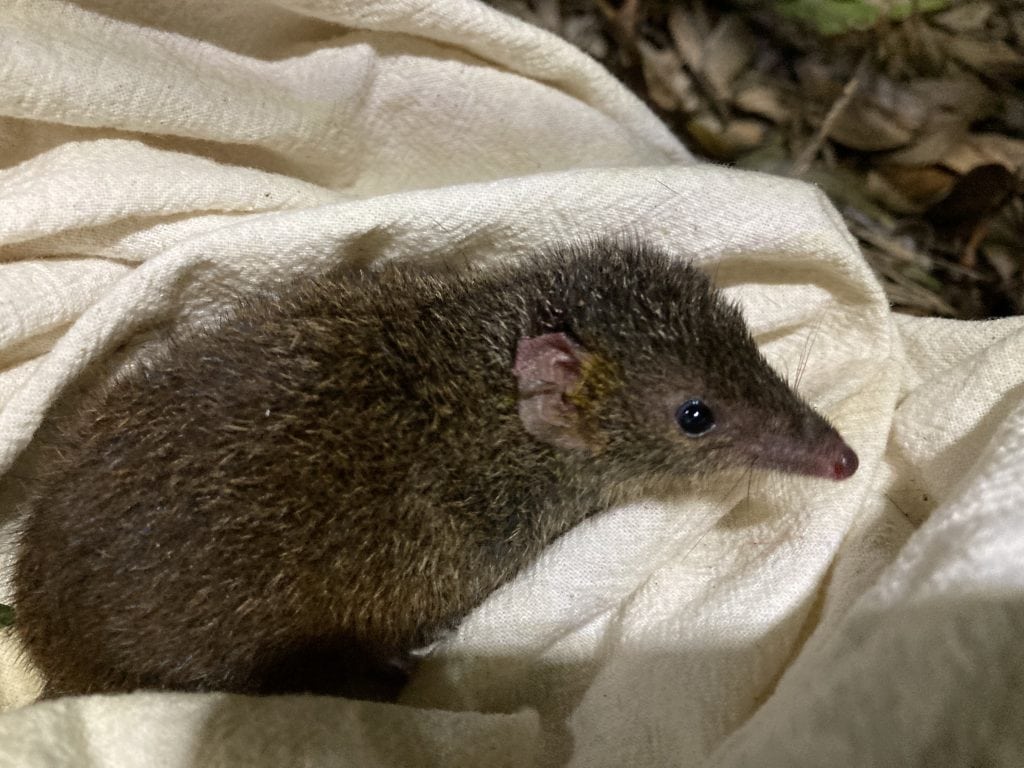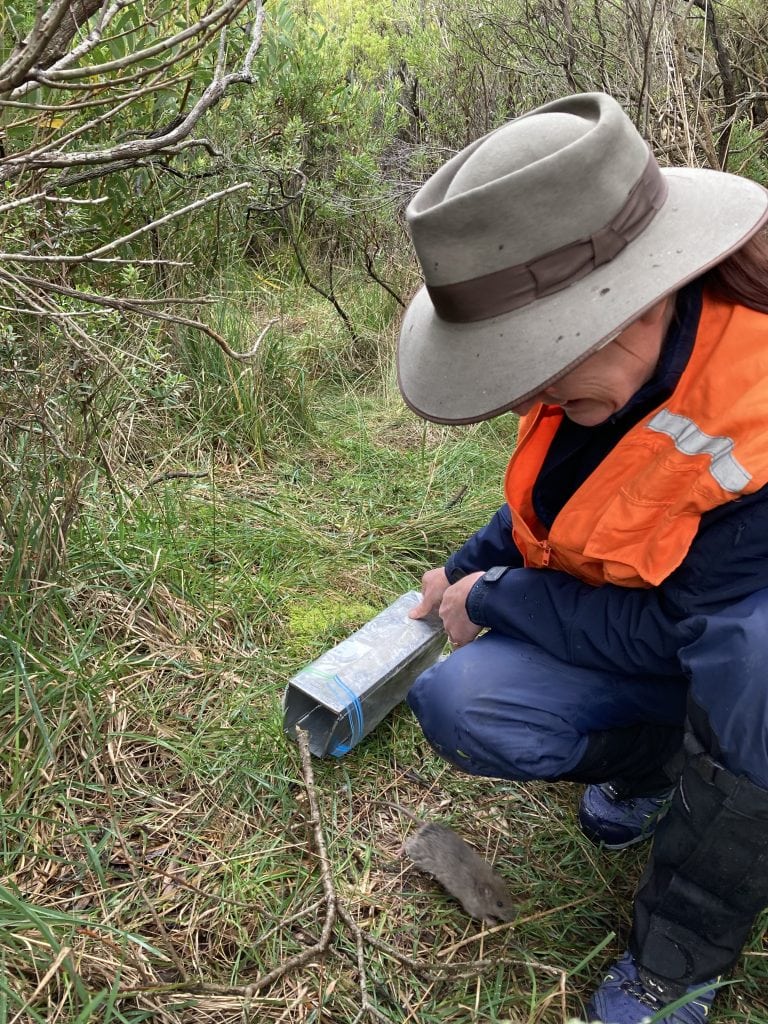Stage 1, completed in June 2020, collated expert opinion and current data to recommend candidate species and reintroduction strategy for the Otways. Following a detailed decision-making process considering the costs and benefits of candidate species’ introduction, it was decided to trial a wild-to-wild translocation of Swamp antechinus to the eastern Otways.
This entails identifying suitable release sites for wild/wild-sourced animals based on long-term survey results, historical release sites and refuge site habitat suitability assessments; and surveying potential source populations to ensure viability.
Ongoing risk management (fire, predator control) and evaluation to sustain sites and species will occur in consultation with public land managers and new tracking methods for released animals will be developed.
Pending the results of the evaluation phase, Swamp antechinus may be released in the eastern Otways before June 2023.


The project team will be led by Dr Marissa Parrott (Zoos Victoria), Dr Jack Pascoe (Conservation Ecology Centre) and includes Mark Le Pla (Conservation Ecology Centre and University of Melbourne), Dr Bronwyn Hradsky (University of Melbourne), Professor Brendan Wintle (University of Melbourne), Jacinta Langdon (Barongarook Pest and Weed); Dr Barbara Wilson and Dr Mark Garkaklis (Barbara Wilson Pty Ltd), and Dr Phoebe Burns (Zoos Victoria).

This project links directly with the Small Mammal Conservation Project through its targeted research assessing the diet of feral cats and foxes in the Otway Ranges, the potential of mesopredator release in the Eastern Otways and the installation and operationalisation of artificial refuges post-fire. Conservation Ecology Centre (CEC) and Barbara Wilson Pty. Ltd. are represented on both project delivery teams.
Working through and with EMAC, the project provides opportunity for Traditional Owners to have direct input into how their country is managed; this will link with the Pig and Deer Management Project in which Traditional Owners will work with the project team to identify cultural assets to be protected.
The Australian Government’s Wild Otway initiative is a three-year $6m commitment towards threatened species management and pest animal control in the greater Otway’s region. The Initiative includes the delivery of a broad and inclusive environmental community grants program and five commissioned sub-projects, which include pig and deer eradication, fox and cat management, Phytophthora (a plant pathogen) management, small mammal conservation and rewilding in the Otways.
Australian Government Wild Otways Initiative website page will be updated regularly with more information when the on-ground works begin. Our CCMA media channels will also be an outlet for project updates. If you would like to receive our regular project Communique please subscribe below to be apart of our distribution below.
The project area for the initiative covers the area from Jan Juc/Bells Beach to Peterborough, and the Great Otway National Park and hinterlands (Otways Region) in South West Victoria.
The initiative will be delivered in the Greater Otways region of Victoria over the next three years to June 2023.

This project is funded by the Australian Government. This project will run until 2023.
64 Dennis Street, Colac VIC 3250
PO Box 159, Colac, VIC 3250
Hours: 8:30am – 5pm, Monday to Friday
T: 1800 002 262
E: info@ccma.vic.gov.au
BARWON WATER OFFICES
Hours: 8:30am – 5pm, Monday to Friday
All mail must be sent via our Colac office
PO Box 159, Colac, VIC 3250
T: 1800 002 262
E: info@ccma.vic.gov.au
 Close
Close